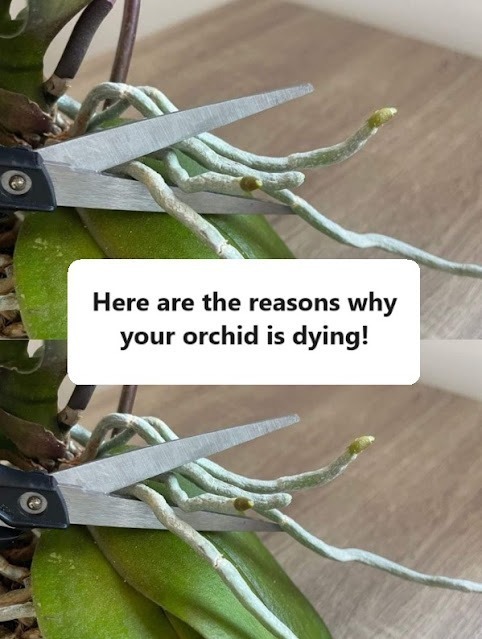ADVERTISEMENT
Here Are the Reasons Why Your Orchid is Dying (And How to Save It!)
Orchids are one of the most beautiful and delicate flowers you can grow, but they can also be a little tricky to care for. If you’ve noticed your orchid wilting, losing leaves, or showing signs of distress, don’t worry – you’re not alone! There are several reasons why an orchid might not be thriving, and understanding these common issues is the first step toward bringing your plant back to life.
Here’s a breakdown of the most common reasons why your orchid may be dying, along with tips on how to save it.
1. Overwatering or Underwatering
One of the most common mistakes orchid owners make is improper watering. Orchids do not like to sit in water for long periods, as this can lead to root rot. On the flip side, they also don’t do well when they’re left too dry.
Signs of overwatering: Yellowing leaves, soggy roots, and a musty smell. Signs of underwatering: Wrinkled leaves, dry roots, and a lack of new growth.
Solution: Water your orchid about once a week, allowing the roots to dry out completely before watering again. Be sure to use a pot with good drainage to prevent water from accumulating at the bottom. If you’re unsure, always err on the side of underwatering rather than overwatering!
2. Insufficient Light
Orchids require bright, indirect light to thrive. Too much direct sunlight can scorch the delicate leaves, while too little light will stunt the plant’s growth and prevent flowering.
Signs of insufficient light: Leggy growth, yellowing leaves, or no flowers. Signs of too much light: Brown, sunburned spots on the leaves.
Solution: Place your orchid near a window with plenty of filtered sunlight. East- or west-facing windows are ideal. If you’re in a particularly dark room, consider using a grow light to supplement natural light.
3. Temperature Stress
Orchids are tropical plants that thrive in temperatures between 65°F and 75°F (18°C to 24°C). Extreme temperature fluctuations can stress your orchid, causing it to wilt or lose its flowers prematurely.
Signs of temperature stress: Drooping or discolored leaves, sudden loss of flowers. Solution: Keep your orchid in a location that maintains a consistent temperature. Avoid placing it near drafts, air conditioners, or heaters. Orchids also benefit from a slight drop in temperature at night, mimicking their natural environment.
4. Poor Air Circulation
Orchids, like many tropical plants, need good air circulation to thrive. Stagnant air can increase the risk of fungal and bacterial infections, leading to plant decline.
Signs of poor air circulation: Mold or mildew on the plant or pot, brown or black spots on the leaves. Solution: Make sure your orchid is placed in a well-ventilated area. If you’re growing orchids in a humid room, consider using a small fan to circulate the air. Just ensure it’s not blowing directly on the plant, as this could dry it out.
5. Improper Fertilization
Over-fertilizing or using the wrong type of fertilizer can harm your orchid. Orchids have delicate root systems and can easily be burned by too much fertilizer.
Signs of over-fertilization: Yellow or burned leaf tips, weak or leggy growth. Solution: Use a balanced, water-soluble fertilizer specifically formulated for orchids. Fertilize once a month during the growing season (spring and summer) and reduce or stop fertilizing during the dormant period (fall and winter).
6. Pests and Diseases
Like all plants, orchids can fall prey to pests and diseases, which can seriously affect their health. Common pests that attack orchids include aphids, mealybugs, and spider mites.
Signs of pests or diseases: Sticky residue on the leaves, visible insects, discolored or deformed leaves, or wilting despite proper care. Solution: Inspect your orchid regularly for pests, especially on the undersides of leaves. If you find pests, treat your orchid with an insecticidal soap or neem oil. If fungal or bacterial infections are present, remove the affected areas and apply a fungicide as needed.
For Complete Cooking STEPS Please Head On Over To Next Page Or Open button (>) and don’t forget to SHARE with your Facebook friends
